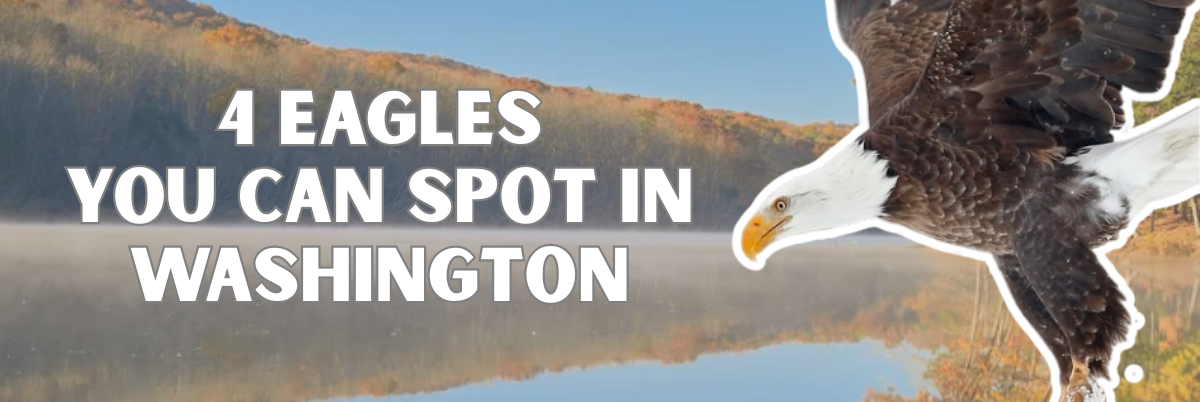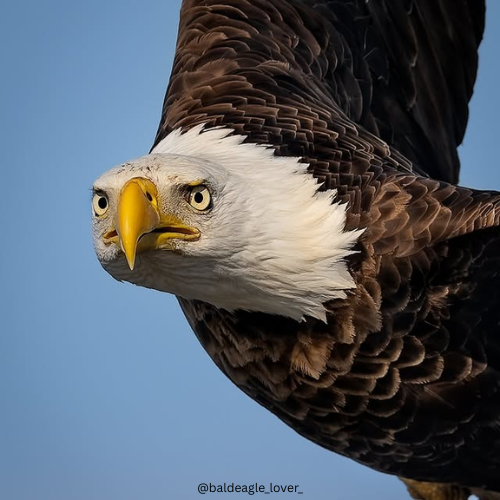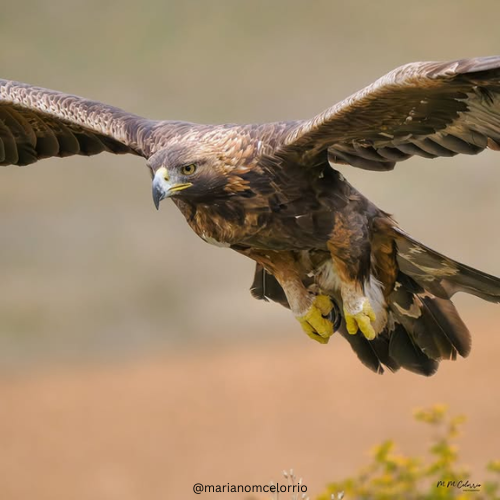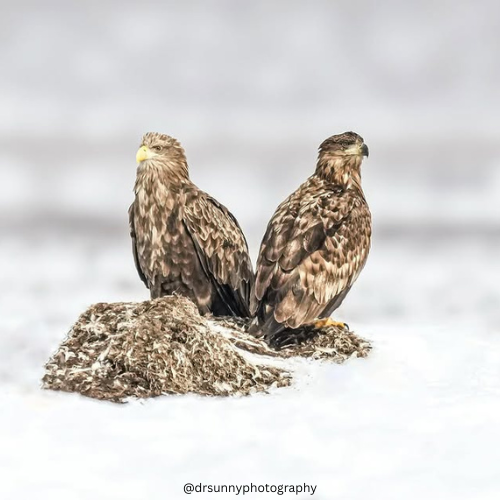
By Avian Feathers Team
Published July 2025
Washington’s diverse landscapes, rugged coasts, forested mountains, and river valleys—are perfect for spotting powerful birds of prey. Eagles soar high above the evergreen treetops and fish-filled waters, and if you’re lucky, you might catch a glimpse of these majestic birds.
1. Bald Eagle
The Bald Eagle is Washington’s most iconic raptor. With its snowy white head, hooked yellow beak, and piercing eyes, it’s a bird you won’t forget. They love to fish and are often found near lakes, rivers, and the Puget Sound. Look for their massive nests built high in tall conifers.
Size
Length: 28–40 in (71–102 cm)
Wingspan: 71–91 in (1.8–2.3 m)
Weight: 6.5–14 lbs (3–6.3 kg)
Scientific Name: Haliaeetus leucocephalus
2. Golden Eagle
Golden Eagles prefer the open spaces of eastern Washington. They’re large, dark brown birds with golden feathers on their necks. These powerful hunters glide over cliffs and valleys, scanning the ground for rabbits, ground squirrels, and other prey. If you’re exploring sagebrush country, keep an eye on the sky.
Size
Length: 26–40 in (66–102 cm)
Wingspan: 71–92 in (1.8–2.3 m)
Weight: 6–15 lbs (2.7–6.8 kg)
Scientific Name: Aquila chrysaetos
3. Steller’s Sea Eagle
This rare giant isn’t native to Washington, but a few birders have been lucky enough to spot one here in recent years. Originally from Russia and northeastern Asia, the Steller’s Sea Eagle is bigger than a Bald Eagle and sports a massive yellow beak and striking black-and-white plumage. It’s a once-in-a-lifetime birding experience.
Size
Length: 33–41 in (85–105 cm)
Wingspan: 79–98 in (2–2.5 m)
Weight: 11–20 lbs (5–9 kg)
Scientific Name: Haliaeetus pelagicus
4. White-tailed Eagle
Another rare visitor, the White-tailed Eagle resembles a Bald Eagle but with subtler coloring. It has a pale head and a wedge-shaped white tail. Native to Europe and Asia, it’s been reported in North America only a few times. Spotting one in Washington would be headline news in the birding world.
Size
Length: 27–37 in (69–94 cm)
Wingspan: 79–96 in (2–2.45 m)
Weight: 7.9–15.4 lbs (3.6–7 kg)
Scientific Name: Haliaeetus albicilla
Washington offers an exceptional opportunity for bird enthusiasts to witness the majesty of various eagle species. While the iconic Bald and Golden Eagles are regularly observed across its diverse landscapes, the occasional, thrilling appearance of the rare Steller’s Sea Eagle and White-tailed Eagle makes birdwatching in the state an even more captivating endeavor. These magnificent raptors, each with unique characteristics and habitats, underscore the rich avian biodiversity that thrives within Washington’s natural environments. Spotting any of these powerful birds of prey is undoubtedly a memorable experience for any nature lover.
Where to Spot Eagles in Washington
Washington’s diverse habitats offer various opportunities to observe these magnificent birds.
Bald Eagle: As Washington’s most iconic raptor, Bald Eagles are frequently sighted, especially near lakes, rivers, and the Puget Sound, where fish are abundant. Look for their enormous nests in tall conifers along waterways. Prime viewing locations include the Skagit River Valley (particularly during winter salmon runs in areas like Rockport and Marblemount), the Nooksack River, Grays Harbor National Wildlife Refuge, and along the Columbia River Gorge.
Golden Eagle: These powerful hunters prefer the open spaces of eastern Washington. They can often be seen gliding over cliffs and valleys in sagebrush country, especially in areas like the Yakima Canyon, Glacier Peak, Entiat River Valley, and the Blue Mountain region.
Steller’s Sea Eagle: Spotting a Steller’s Sea Eagle in Washington is a truly rare and opportunistic event, as they are not native to the area. These sightings are highly unpredictable and usually make local news among birding communities. Keep an eye on birding alerts and forums for any reported appearances, as these are often isolated incidents of a vagrant bird.
White-tailed Eagle: Similar to the Steller’s Sea Eagle, the White-tailed Eagle is also an extremely rare visitor to North America, including Washington. Any sighting would be considered a major event in the birding world. Like the Steller’s, these sightings are irregular and depend on the chance occurrence of a vagrant bird.




